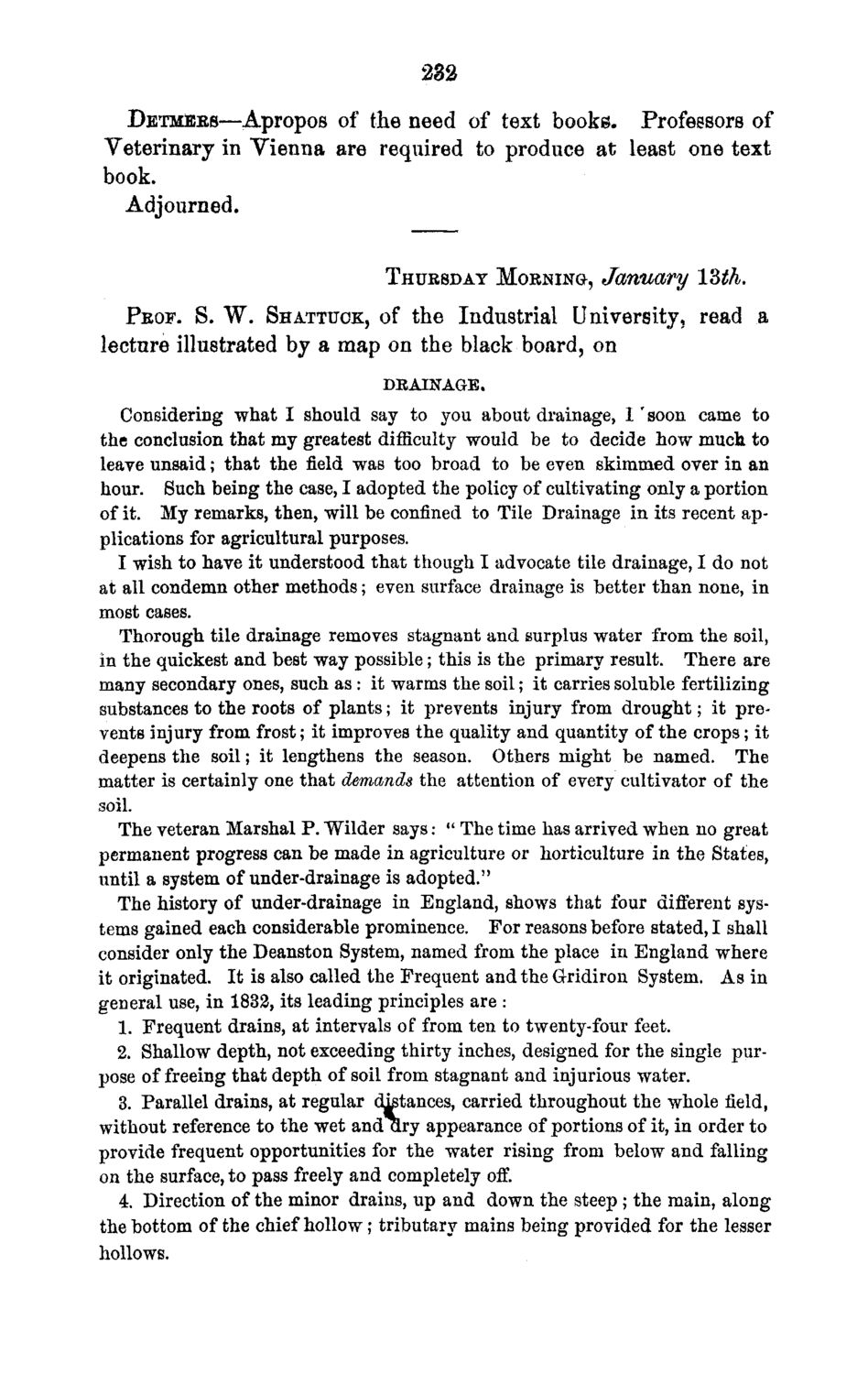| |
| |
Caption: Board of Trustees Minutes - 1870
This is a reduced-resolution page image for fast online browsing.

EXTRACTED TEXT FROM PAGE:
282 DETMERS—Apropos of the need of text books. Professors of Veterinary in Vienna are required to produce at least one text book. Adjourned. THURSDAY MORNING, January \Zih. PROF. S. W. SHATTUCK, of the Industrial University, read a lecture illustrated by a map on the black board, on DRAINAGE. Considering what I should say to you about drainage, I 'soon came to the conclusion that my greatest difficulty would be to decide how much to leave unsaid; that the field was too broad to be even skimmed over in an hour. Such being the case, I adopted the policy of cultivating only a portion of it. My remarks, then, will be confined to Tile Drainage in its recent applications for agricultural purposes. I wish to have it understood that though I advocate tile drainage, I do not at all condemn other methods; even surface drainage is better than none, in most cases. Thorough tile drainage removes stagnant and surplus water from the soil, in the quickest and best way possible; this is the primary result. There are many secondary ones, such as: it warms the soil; it carries soluble fertilizing substances to the roots of plants; it prevents injury from drought; it prevents injury from frost; it improves the quality and quantity of the crops; it deepens the soil; it lengthens the season. Others might be named. The matter is certainly one that demands the attention of every cultivator of the soil. The veteran Marshal P. "Wilder says: " The time has arrived when no great permanent progress can be made in agriculture or horticulture in the States, until a system of under-drainage is adopted." The history of under-drainage in England, shows that four different systems gained each considerable prominence. For reasons before stated, I shall consider only the Deanston System, named from the place in England where it originated. It is also called the Frequent and the Gridiron System. As in general use, in 1832, its leading principles are : 1. Frequent drains, at intervals of from ten to twenty-four feet. 2. Shallow depth, not exceeding thirty inches, designed for the single purpose of freeing that depth of soil from stagnant and injurious water. 3. Parallel drains, at regular distances, carried throughout the whole field, without reference to the wet and ary appearance of portions of it, in order to provide frequent opportunities for the water rising from below and falling on the surface, to pass freely and completely off. 4. Direction of the minor drains, up and down the steep ; the main, along the bottom of the chief hollow; tributary mains being provided for the lesser hollows.
| |